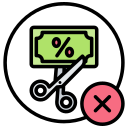Home Office Deductions That Stand Up to Audit
Measure your workspace area and divide by your home’s total finished area to estimate the business-use percentage. If your space is shared, adjust for time used. Keep a quick log of typical weekly hours. Comment with your setup and we’ll help brainstorm a fair method for your situation.
Home Office Deductions That Stand Up to Audit
Eligible costs often include rent, utilities, and internet, proportionate to business use. Document your method once, then apply it consistently across bills. If you upgrade internet primarily for client work, note that in your records. Share your monthly breakdown and we’ll suggest tweaks to simplify your calculation.
Home Office Deductions That Stand Up to Audit
Small repairs to your workspace are commonly deductible, while significant upgrades may be capitalized and claimed over time. Photographs and invoices help explain why the work supports your business. Tell us about a recent repair or upgrade, and we’ll discuss how to document it convincingly.



